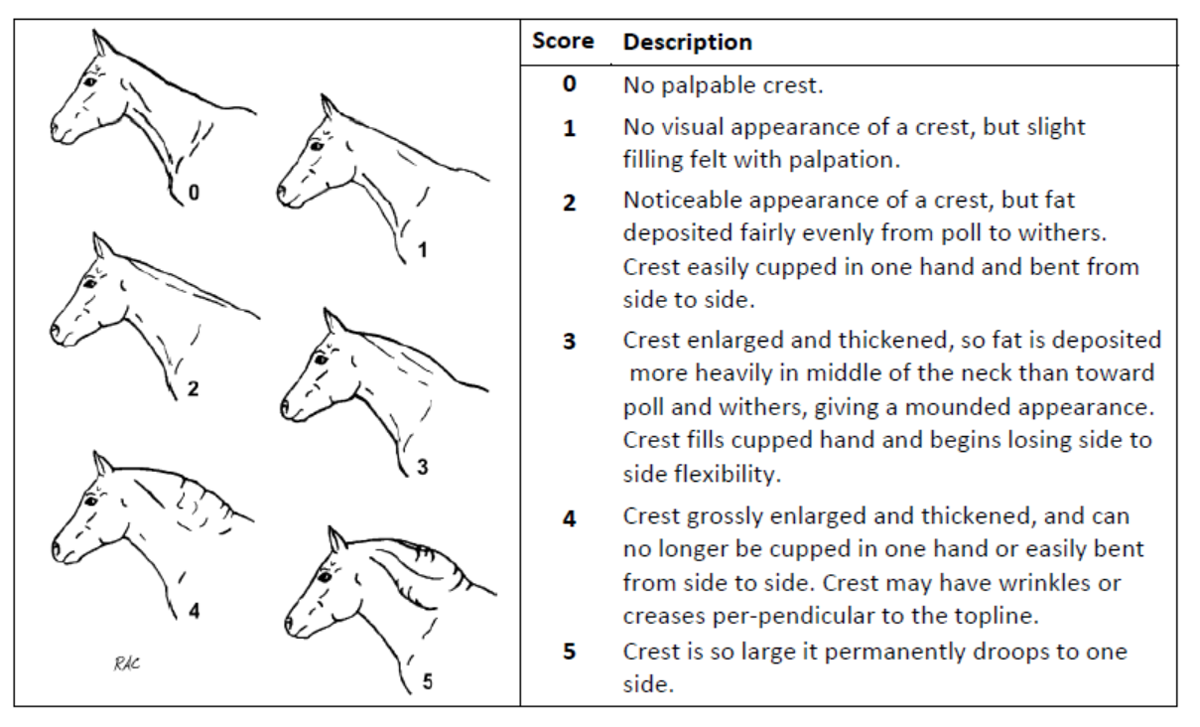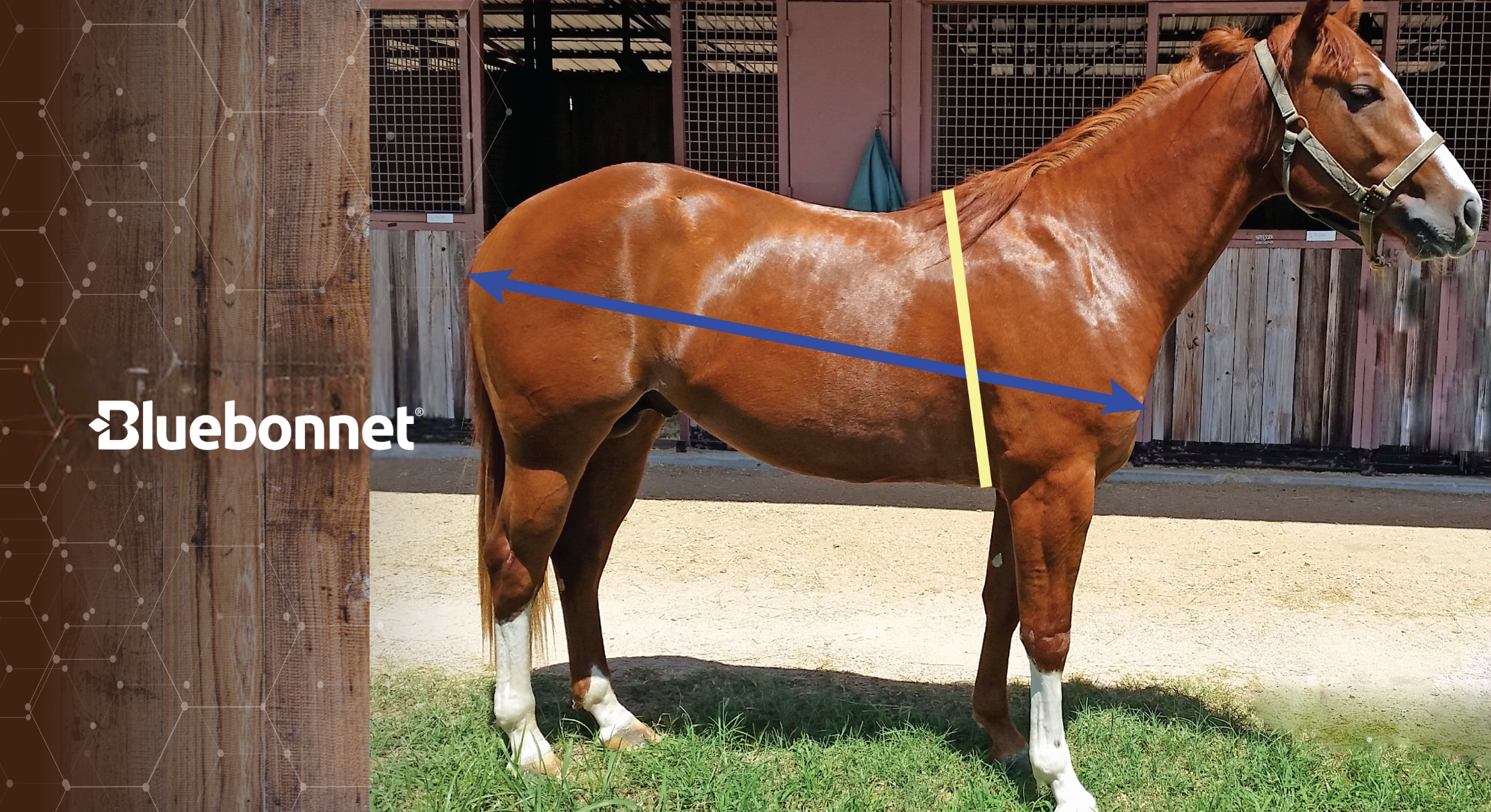Knowing the body weight of a horse is an essential element for many management decisions. Most horse owners and veterinarians underestimate body weight of a horse when using only visual assessment. Livestock scales are the most accurate method for determining body weight of a horse, but they are not easily accessible by most horse owners. This poses two questions for horse owners: 1) is it really that important to know the body weight of a horse, and 2) without having access to a scale are there other ways to make an educated estimate of body weight?
Importance of Knowing Body Weight
Body weight is the single most important factor needed for establishing a nutrition program for any horse. Nutrient requirements set forth by the National Research Council are based on body weight, therefore one must have at least a general idea for a horse’s body weight in order to determine the appropriate set of nutrient requirements to base rations. Body weight is correlated with nutrient requirements and total feed intake; larger horses have higher nutritional requirements and must consume more total food than a smaller horse.
Understanding body weight is also important when it comes to following label guidelines for feed. Many horse owners do not consult with a nutritionist when deciding on a feed program for their horse, therefore they must rely on the feeding instructions provided by a feed manufacturer. These instructions are required by law to be listed either on the bag or on an attached tag. Each manufacturer may list instructions in a slightly different format, but they are always based on body weight. For example, one feed tag may instruct to feed 0.5 lb for every 100 lb of body weight. Another feed tag may instruct to feed 0.5% of body weight. For both examples, that would mean feeding 5 lb per day if the horse weighs 1,000 lb. However, if a horse owner underestimated body weight, and the horse actually weighs 1,250 lb, the horse should have been fed 6.25 lb per day. If the horse owner overestimated body weight and the horse actually weighs 800 lb, the horse should have been fed 4 lb per day.
In the case of underestimating a horse’s body weight, and feeding too little, a horse can end up in a negative energy balance meaning they will begin to lose weight and drop in body condition. In the case of overestimating a horse’s body weight and feeding too much feed, a horse will begin to accumulate excess fat and may become overweight or obese. Both situations can have negative effects on the health and performance of a horse.
Estimating Body Weight without a Scale
While a scale is most accurate, it is not always most practical. Therefore, several systems have been established to help estimate body weight. The most convenient and inexpensive option is a weight tape, which estimates body weight based on circumference of the heart girth, however this is the most inaccurate method. A 2002 study by Ellis and Hollands evaluated the accuracy of four weight tapes on 2,000 horses including 112 different breed types and found significant differences among the tapes.
A more preferred method for estimating body weight is the use of calculations which take into account both heart girth and length of the horse as shown below:
Figure 1: Example of two calculations used for estimating body weight in horses.
| BW, kg = (Heart Girth, cm 2 x length, cm) / 11,880 | |
| BW, lb = (Heart Girth, in 2 x length, in) / 330 | |
|
Additional
methods that should be considered in assessing a healthy body weight for your
horse are body condition scoring, neck circumference, and girth to height
ratio. The Henneke body condition scoring system, based on a 1-9 scale, is the
gold standard, and it evaluates specific areas of fat accumulation.
Figure
2.
Areas of assessment for Body
Condition Scoring

Although body condition score has been an industry standard, it is a subjective system and is not especially useful in differentiating areas of regional adiposity that may be indicative of disease. For example, heavy fat deposits along the crest of the neck are associated with altered metabolic states such as insulin resistance. A standardized 0-5 cresty neck scale developed by Carter et al. (2009) is a subjective scoring system developed to help assess regional fat deposits that my indicate health concerns.
Figure 3. Cresty Neck Scoring System

Girth to height (G:H) ratio is another useful tool in assessing proper body condition in horses, and is similar to body mass index (BMI) in humans. For this assessment, a measurement of the heart girth circumference is divided by height. Horses are considered overweight if the G:H ratio is greater than or equal to 1.26, and obese if the ratio is greater than or equal to 1.29. Ponies are considered overweight and obese at G:H ratios greater than or equal to 1.33 and 1.38 respectively.
Healthy Horses
Horses that are managed at a healthy body weight may lead longer, healthier lives and be less likely to suffer metabolic diseases and performance related injuries. With tools such as weight tapes, body weight calculations, body condition scoring, cresty neck scoring, and girth to height ratios, even horse owners that do not have access to a weight scale are capable of maintaining proper body weight and condition of their horse.


